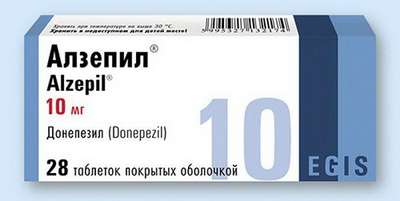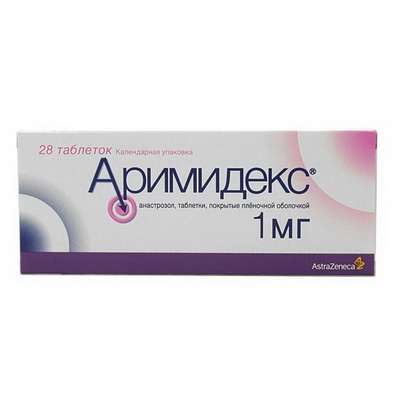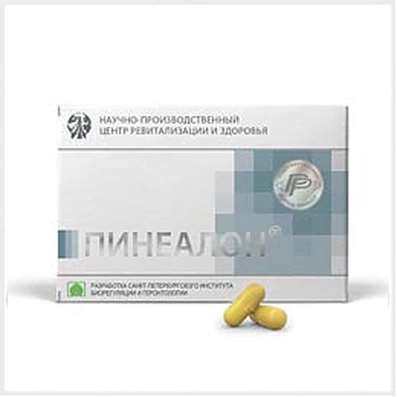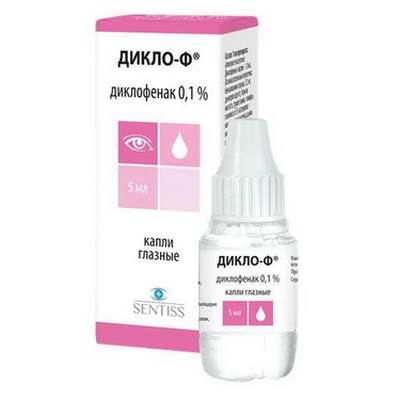DMAA (Geranium extract)
10 Jan 2017
Pharmacological group: CNS stimulants.
Pharmacological action: psycho-physical stimulation; increase efficiency; improved mood; increased lipolysis (fat burning); appetite suppression.
The impact on the receptors: dopamine and noradrenaline receptors (agonist)
1,3-DMAA is a neural stimulator, the structure of which is similar to ephedrine and epinephrine. At the moment, little information is available about the reception of 1,3-DMAA and he is no longer sold as a dietary supplement.
General information
DMAA is a neurological stimulator, which promotes rapid acceptance increase energy efficiency that is similar to the classic caffeine and other stimulants, but the effect achieved through other mechanisms. Initially DMAA was presented as a remedy for nasal congestion - "Oil extract germanium", but later used as a neurological stimulator in the form of tablets. In view of the structural similarity with amphetamines, during testing before the event is detected in the urine as doping and therefore it is not recommended for use before competitions. virtually not been studied in isolation.
Other names: 4-methylhexane-2-amine, DMAA, dimetilamilamin, 1,3-DMAA, Geranamine, methylhexaneamine, 1,3-D dimetilpentilamin, Vortala, Forthane.
Not to be confused with DMAE, DHEA, memantine (same acronym, a different composition).
On a note! DMAA is a powerful stimulant.
Variety: Weight loss products; nootropics
Attention! When testing before the event is detected in the urine as amphetamine drugs. World Anti-Doping Agency added methylhexaneamine to the list of banned substances in 2010, and, since the use of 1,3-DMA in the United States severely restricted, 1), the Australian Government has made the list of DMAC 9, and banned its sale.
DMAA (geranium extract, 1.3 Dimetilamilamin, methylhexaneamine) - an organic compound with the formula CH3CH2CH (CH3) CH2CH (CH3) NH2. DMAA was sold under different trade names as a food additive, but soon its safety has been questioned. The substance is also simple aliphatic amine used as a nasal decongestant and for the treatment of hypertrophic and hyperplastic tissues of the oral cavity. This vasoconstrictor, which can be administered by inhalation to the nasal mucosa. DMAA is not a derivative of geranium and obtained synthetically.
History
In April 1944, the company Eli Lilly and Company has released methylhexaneamine Forthane under the trade name to be used as a nasal decongestant. Forthane has also been patented for the treatment of hypertrophic and hyperplastic tissues of the oral cavity. In addition to patent applications, the use of methylhexaneamine is not mentioned in the historical medical literature, and today the medical use of methylhexaneamine not recognized. Trademark Forthane is no longer valid. Methylhexaneamine should not be confused with isoflurane, the common inhalation anesthetic manufactured in Australia under the trade mark Forthane. In 2006, Arnold, Patrick methylhexaneamine re-introduced as a food additive, after the final prohibition of ephedrine as a dietary supplement in the United States in 2005 year. The substance has been presented under the brand name Geranamine, and produced by the company Proviant Technologies. The drug is available as a tool for fat loss and provide energy for workouts. The substance is used in combination with other substances, such as caffeine. These combinations are similarly with combinations of ephedrine with caffeine, a first ingredient which is currently banned in many countries. In 2012, during the Dutch research literature on the regulatory status of methylhexaneamine, scientists have concluded that supplements containing more than 4 mg methylhexaneamine, are pharmacologically effective and require licensing as a drug. The authors concluded that the oral methylhexaneamine acts as a bronchodilator (at doses greater than 4 mg), increases the heart rate (in excess of 50-75 mg doses), blood pressure and increases (in doses of 100 mg). Serious side effects possible with oral doses greater than 200 mg.
DMAA: instructions for use
The minimum dose of 1,3-DMA is 10-20mg, maximum - 40-60mg a day, although no specific data on the optimal number at the moment, the above dosage border are standard. 1,3-DMAA is prohibited by various sports organizations due to their structural similarity with amphetamines, and is therefore not recommended to receive athletes, passing control before the competition.
Chemistry
Methylhexaneamine structure has been described as close to amphetamine. Methylhexaneamine synthesized by converting 4-methylhexane-2-1 oxime, followed by reduction with sodium in ethanol, which is similar to Buvo Blanc reaction. Methylhexaneamine is the agent releasing catecholamine neurotransmitters norepinephrine (noradrenaline), similar to the related substances such as cyclo-pentamine and tuaminoheptane.
Structure and function of DMAA
DMAA is a straight carbon chain amine 7 alifitik and structurally similar to amphetamine, methamphetamine and MDMA. 3) The first was presented as a drug against nasal congestion, but later began to be used as a neurological stimulator and dispensed in tablet form. DMAC is also structurally similar to propylhexedrine, a stimulant, which has the property of in vivo fat burning. Because of the structural similarity, mechanism of action may also be similar to epinephrine - has the same effects as epinephrine, but direct metabolism pharmacokinetics studies on DMAA was conducted.
The use of DMAA
Originally released by Eli Lilly as a nasal decongestant, methylhexaneamine produced marketed as a dietary supplement in combination with caffeine and other ingredients, under such trade names as Geranamine and Floradrene, and as available without prescription thermogenic drug or general stimulant. Since then, as Eli Lilly introduced its patent in 1944, methylhexaneamine has not been intensively studied and its pharmacological profile is not appreciated. It was also stated that it has less of a stimulating effect on the central nervous system than the corresponding compounds of amphetamine and ephedrine. In New Zealand methylhexaneamine (called 1,3-dimetilamilamin or DMAA) is a new active ingredient, manufactured tablets. In November 2009, the New Zealand Government announced plans to make the list methylhexaneamine limited to the use of substances. The New Zealand Government has not banned the use of methylhexaneamine, but the Ministry of Health of the country banned the mass of powder procurement, allowing at the same time sales agent in the form of capsules and tablets. The Ministry of Health of New Zealand is currently published Rules of temporarily authorized agents. The meaning of this innovation - to make the illegal implementation of DMAA products after 7 April 2012. Please pay attention to Semax.
Safety and legality of DMAA
Safety in the short-term use
Although it seems that the drug is well tolerated in the form of supplements before exercise, in the course of studies with the drug in tablet form noted the possibility of hemorrhage into the brain. At the moment, there are no data regarding the long-term toxicology at the reception of the drug, and the LD50 figure at a single intravenous injection was 39mg / kg and intraperitoneal injection -185mg / kg, which theoretically is much lower as compared to oral administration.
Legality of DMAA
DMAA erroneously described as a component part of the geranium, which was refuted by an independent laboratory analysis of geranium oil.
Doping control before the competition
In view of the structural similarity with amphetamines, during testing before the event is detected in the urine as doping and therefore it is not recommended for use before competitions.
Safety of DMAA
Methylhexaneamine half-lethal dose is 39 mg / kg iv and 185 mg / kg when administered intraperitoneally in mice. Anecdotal reports suggest that very high doses of methylhexaneamine in combination with caffeine and alcohol can be dangerous to the body. In New Zealand, 21-year-old man died of a cerebral hemorrhage after receiving 556 mg methylhexaneamine, caffeine and alcohol. No data on the status of hydration of the man, they consumed the food they consumed illicit substances, and the weight of his body. manufacturer's representative stated that źDMAA is, in fact, part of the plant geraniums (Pelargonium Graveolens) and produced oil from it and for over 100 years was a part of the human diet." However, a study published in December 2011 A. Lisi, Hasikov N., R. Kazlauskas and S. Goebel, contrary to the statements of manufacturers methylhexaneamine and, in particular, they said that "geranium oil do not contain methylhexaneamine" and "products comprising in its composition of geranium oil containing methylhexaneamine thus can be produced only by adding them to the composition of synthetic material". A study conducted in September 2011 showed that taking high doses of 1,3-dimetimamilamina (75 mg) alone and in combination with caffeine leads to increased blood pressure, without increasing heart rate. In a study of 25 healthy men taking before training sports supplements containing methylhexaneamine, it was shown that methylhexaneamine not change heart rate, blood pressure, and does not affect liver and kidney functions when used at the recommended doses. Four additional studies it was shown that DMAA not cause any adverse effects on blood, blood pressure or heart rate, when tested in a short period. The US military has organized a massive recall of all products containing methylhexaneamine from all military warehouses around the world sharing, after the announcement of the two soldiers who died of a heart attack during training in 2010. Methylhexaneamine composition was found in their blood. "These products are legally permitted and not yet found any connection between DMAA and serious condition of the patient reported by military medical staff," said a spokesman for the Ministry of Defence, Peter Graves. "As a precaution, the Ministry of Defense ordered to withdraw these products from the market." The death of Claire Squires, runner, who died suddenly close to the finish line in April 2012, during the London Marathon, has been associated with the use of DMAA. The coroner said that DMAA was "probably the most important factor" in her death. It is believed that the substance contained in the energy drink, which used the athlete before competition.
Dispute about DMAA
Many professional and amateur sports organizations such as the World Anti-Doping Agency banned the use of methylhexaneamine as a substance that enhances the performance and suspend athletes who use it. In February 2012, the death of two American soldiers who died during physical training, has led studies of the popular supplements for bodybuilding, organisms found in the victims. This prompted the Department of Defense to withdraw products containing methylhexaneamine, the shelves in anticipation of the investigation. Pentagon spokesman stressed, however, that "these products are not legally banned and have not yet found any connection between DMAA and states that are reported by military medical staff. As a precaution the Ministry of Defense ordered to withdraw from the sale of these products. " The findings of the Ministry on this issue is expected at the end of March 2012. Surgeon US Army said: "I want to emphasize that it is still not established any connection between DMAA and states that are reported by military medical staff. Leaders of the Ministry of Defense, and US Flight Center took these reports very seriously, however, these events have multiple causes. It is too early to say whether they have a connection with DMAA ╗. June 19, 2012 The South African Institute of Sport without doping (SAIDS) confirmed the victory in a friendly Ludwik Mamabolo Marathon 2012, which gave a positive result for a banned stimulant. Mamabolo can expect a two-year suspension and deprivation of title in the event, if an athlete is found guilty by an independent tribunal.
DMAA and legislation
In July 2011, Health Canada has determined DMAA is not a dietary ingredient, but as a drug, requiring further approval. Health Canada has banned all sales of DMAA. In March 2012, New Zealand released a notice that announces DMAA temporarily permitted substances. In April 2012, New Zealand officially prohibits DMAA and its use in tablets. In April 2012, the FDA (Office for the Control Food and Drug Administration) in the United States issued a written warning DMAA producers. DMAA FDA accused the producers in the absence of material evidence of safety. In June 2012, the National Agency for Food Sweden issued a general warning regarding the use of DMAA products, as a result of their sale have been banned in some parts of the country. August 1, 2012 DMAA was banned in Australia. In New South Wales, DMAA classified poisons listed as "particularly dangerous substance." In July 2012 the National Agency for Sanitary Surveillance (ANVISA) in Brazil has issued a warning to the public, saying the danger of using products containing in its composition DMAA. There was also updated the list of banned substances containing DMAA, which means the complete withdrawal of products that contain these ingredients from the Brazilian market. In August 2012, the Agency for medicines regulation and health care products (MHRA) has decided that the popular DMAA-containing sports supplement Jack3d is an unlicensed drug, and that he and all other products containing DMAA, must be withdrawn from sale in the UK because of the risk for public safety. In January 2013, the investigation found that DMAA was the cause of death of 30-year-old woman who died at the finish line at the London Marathon 2012.
Effects on blood pressure
Either alone or in combination with the caffeine during blind study (when one of the groups given the real drug, and the other - placebo) showed that the drug significantly increases blood pressure, but has no effect on pulse.
Buy DMAA
In 2009 he was included in the list of banned substances the world anti-doping Agency (WADA). In Russia, however, this component is also included in the list of prohibited substances by the Russian Anti-Doping Agency (RUSADA). Therefore, acting athletes (who runs the doping control) is recommended to refrain from the use of this stimulant. However, supplements containing DMAA, approved for sale. Sports nutrition with DMAA: - Jack3d (USPlabs) - OxyElite Pro (USPlabs) - NeuroCore (MuscleTech) - HydroxyStim (MuscleTech) - Hemo Rage Black Ultra Concentrate (Nutrex) - Lipo-6 Black (Nutrex) - Lipo-6 Black Hers ( Nutrex)

 Cart
Cart





